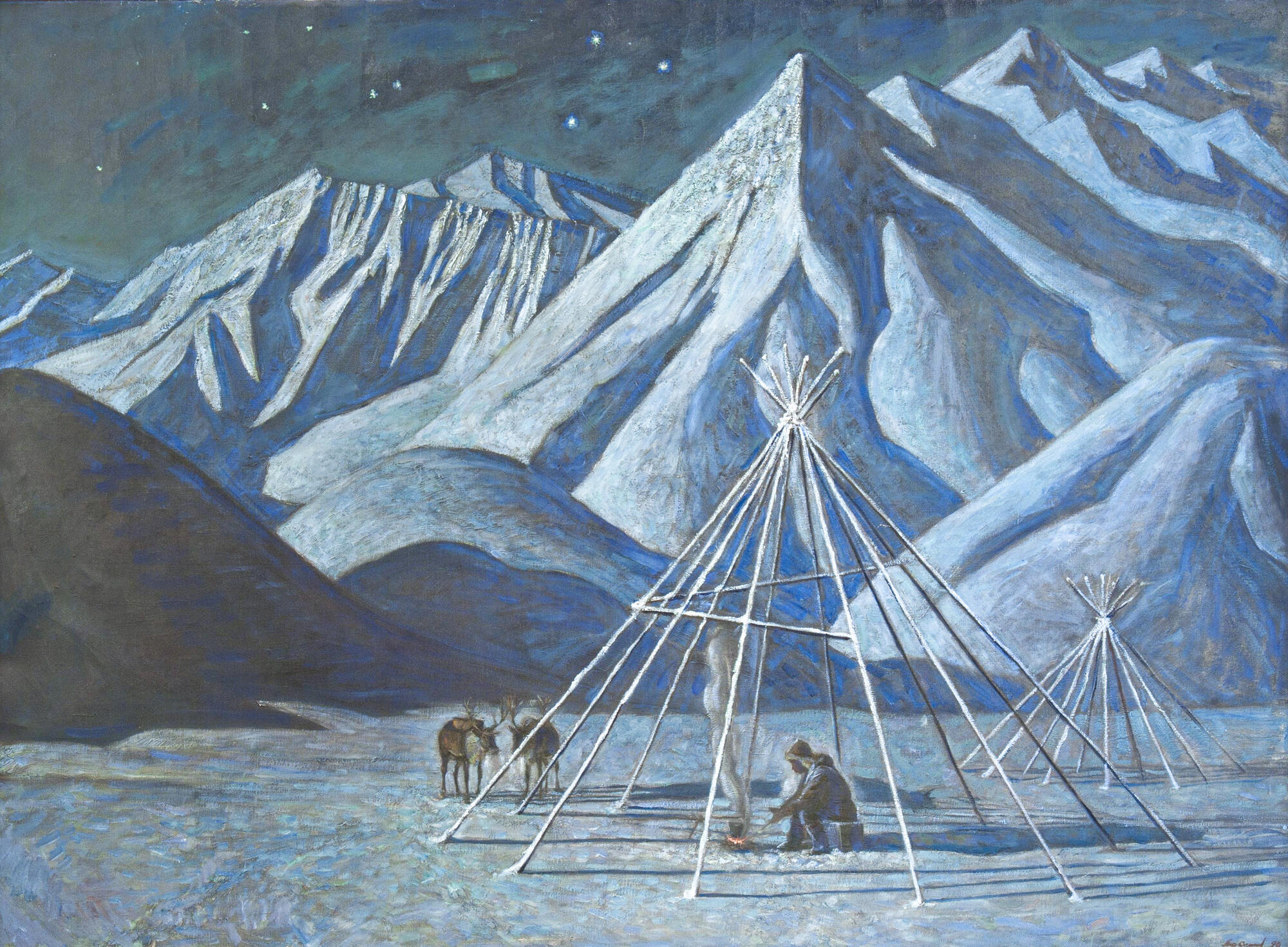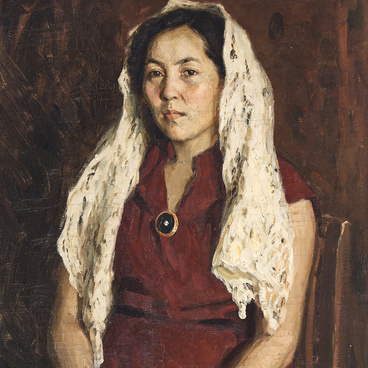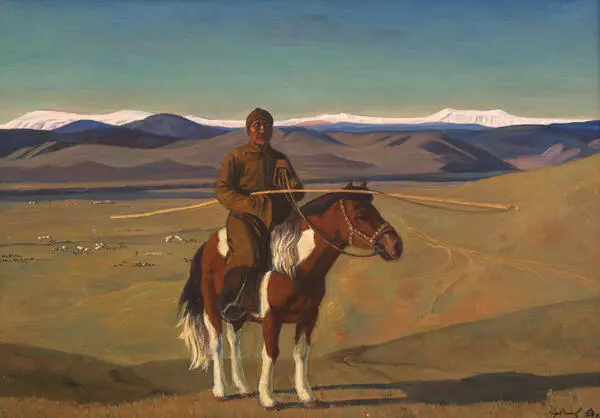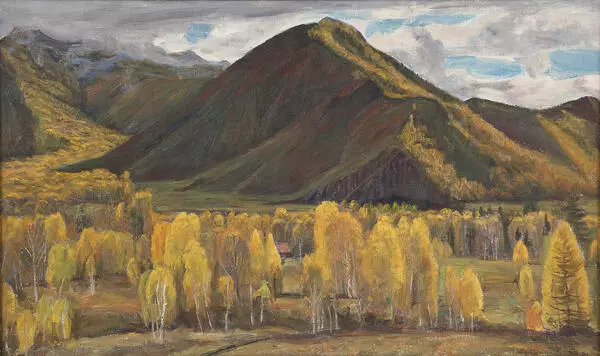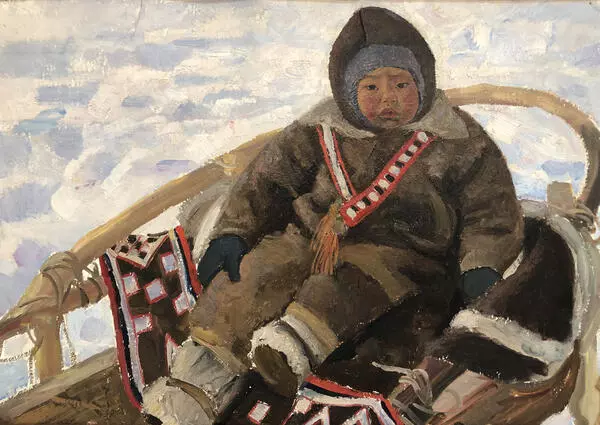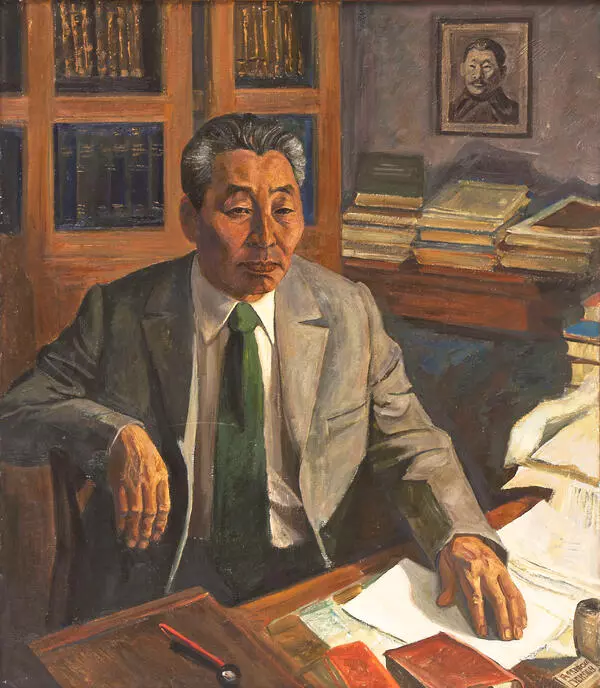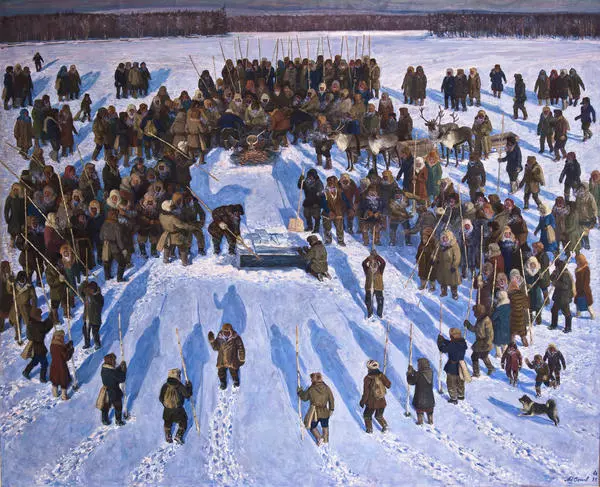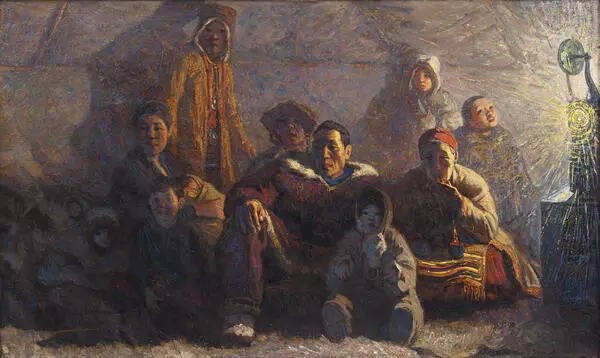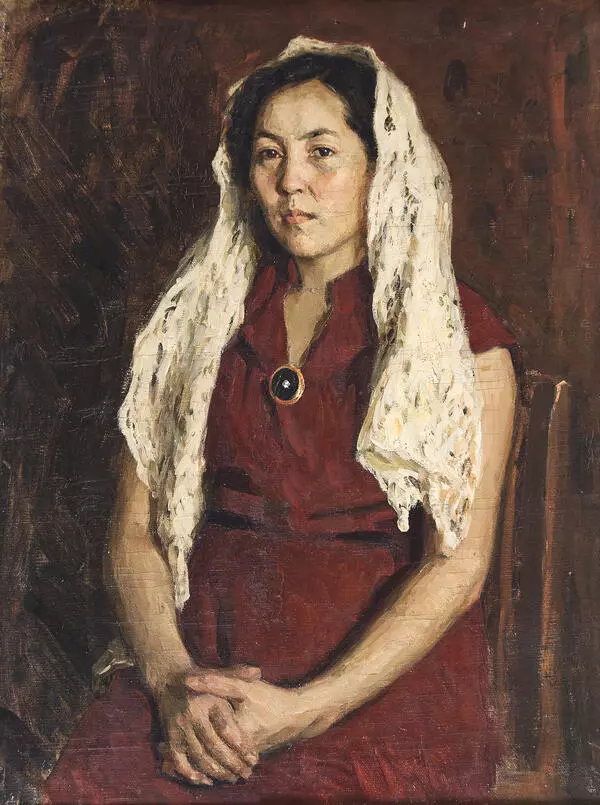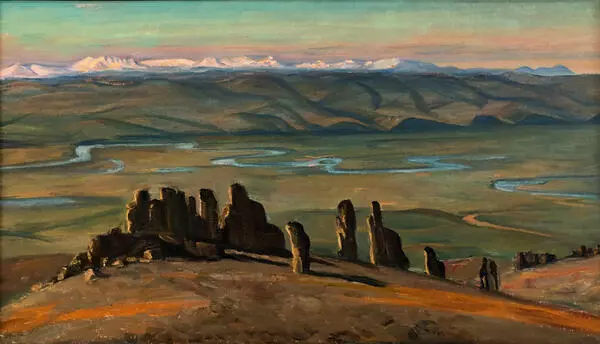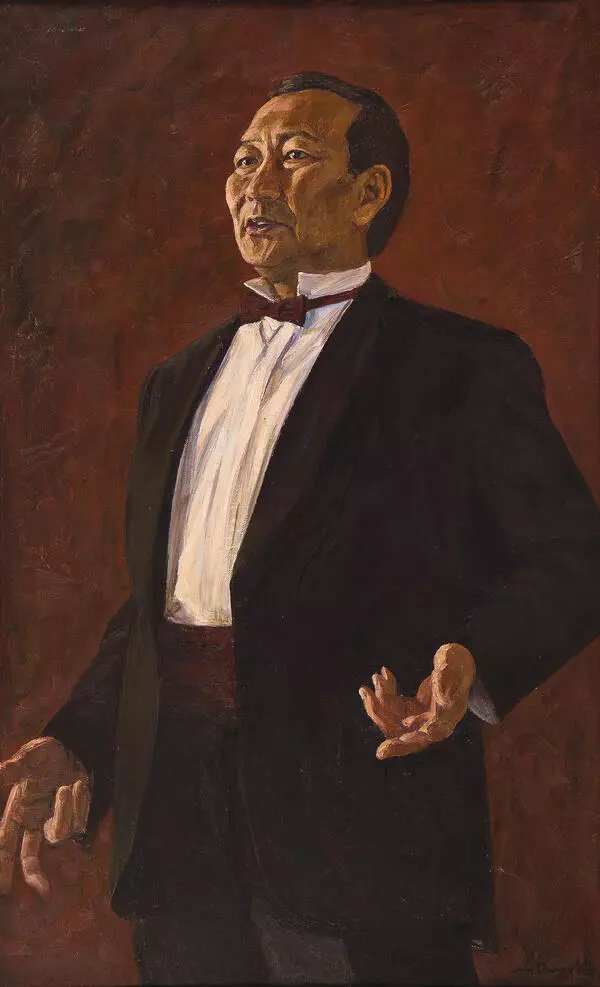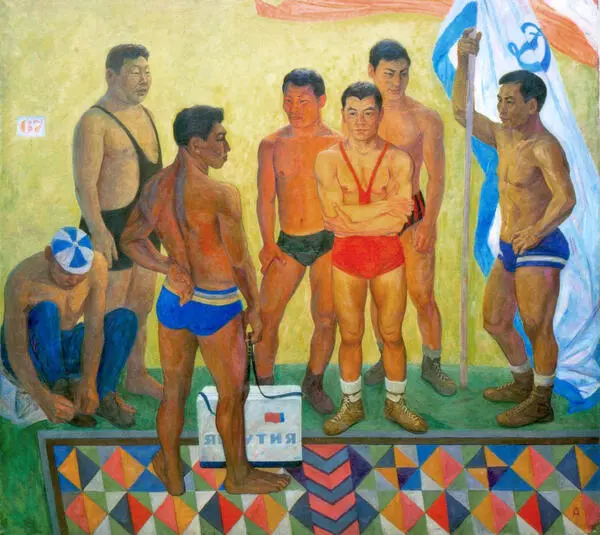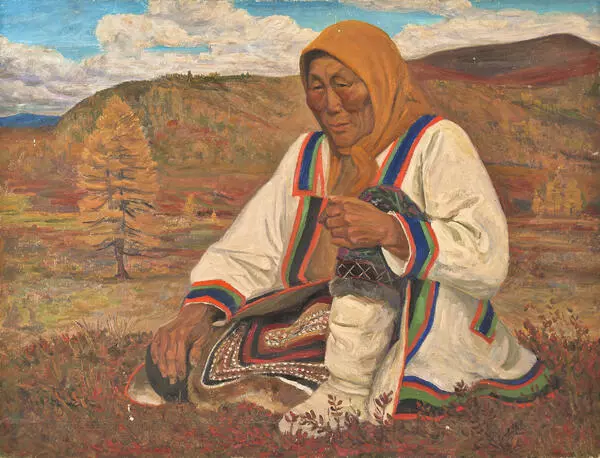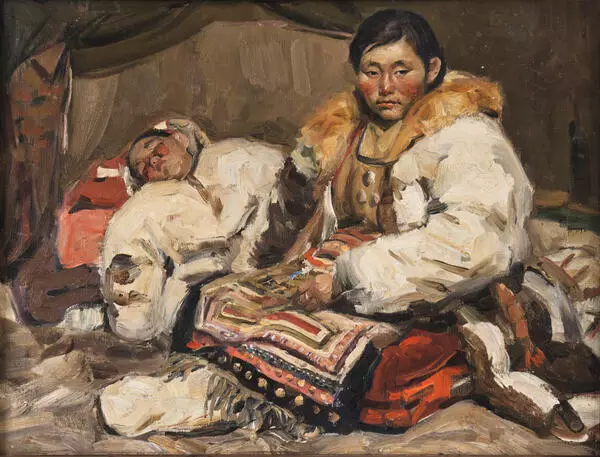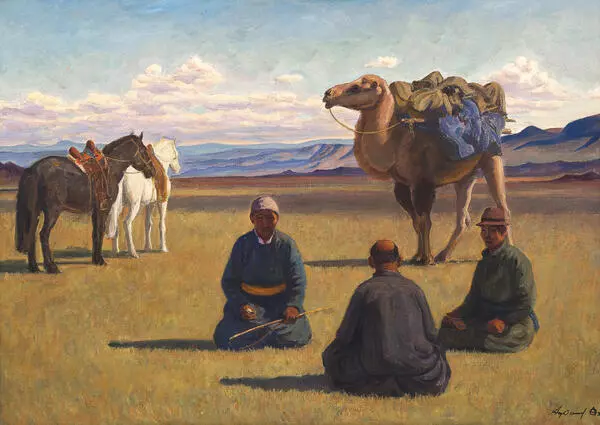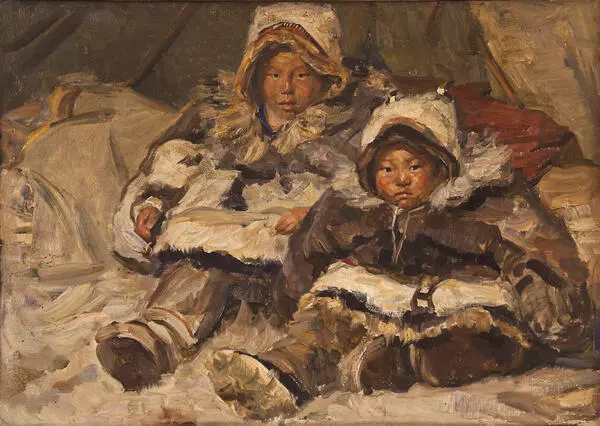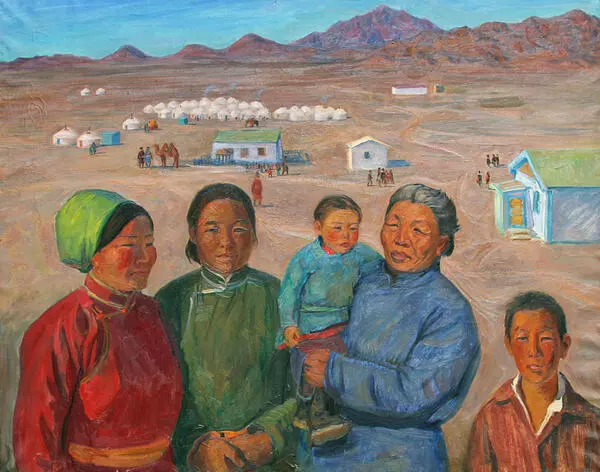Afanasy Osipov is a Yakut painter, academician of the Russian Academy of Arts, People’s Artist of the USSR, winner of the Ilya Repin State Prize of the RSFSR. Osipov first came to the Arctic North in early 1958. Then he visited the coast of the Arctic Ocean. Together with Semyon Danilov who later dedicated his “Northern” poem “Happiness of the Eagle” to him, he made trips to distant villages and camps of reindeer herders in the Nizhnekolymsky District.
After another trip to the tundra, in 1990, the artist creates a triptych “Golden Veins of Indigirka”, which reveals the moral, social, and environmental problems of our time associated with the loss of cultural traditions. The central part of the triptych is based on the portrait “From the Family of Former Even Princes. Anna Shumilova” drawn in 1989. The canvas “At the Extinguished Hearth” depicts the oldest representative of a known family in the dark, almost empty space of the chum. In the triptych, the artist deliberately changes the details of clothing. In the portrait written from nature, Shumilova is dressed in a kerchief with a floral pattern. In the painting “At the Extinguished Hearth”, the color pattern of the headscarf is replaced with an ornament in the form of a cross. There is no elegant edging on shoes, which has a high semiotic status and the function of a talisman among the peoples of Yakutia. There is no road ahead. The main meaning of the work is revealed by many means. In the portrait, an elderly woman looks at the viewer with a piercing and tenacious gaze, and in the triptych, the heroine’s sad gaze is directed at empty space. The face dotted with wrinkles is expressive. Thanks to artistic exaggeration, it looks more like an ancient mask that preserves thousands of years of memory.
The canvas ‘Getter’ is based on a comparison of a huge space and a small human figure. Mesmerizing beauty of the night, almost unearthly landscape, it seems that ‘the stars here are just around the corner’. Against the background of lifeless silent white peaks, elegant poles of yurts are perceived as a unique invention of Northern civilization. The conical frame of the dwelling follows the shape of the mountains organically fitting into the Northern landscape.
The cold silence of the snowy desert depicted in the right part of the triptych is contrasted with the left part that is earthy-gray in its tint. The canvas ‘Washing Season’ seems to be filled with industrial sounds, such as humming pipes, cranes, and cars. The landscape is completely deserted. The equipment insignificant in its size on the torn, dug-up earth is a sad sight. According to the artist, the canvas depicts the Olchan Mine in the Aldan District, near which the Shumilov family of reindeer herders lived. The triptych ‘Golden Veins of Indigirka’ is a rare work of dramatic power in the work of the Yakut master who is not characterized by tragic, pessimistic moods. As a rule, his art is permeated with a clear and kind vision of the world, love for man and his deeds.
After another trip to the tundra, in 1990, the artist creates a triptych “Golden Veins of Indigirka”, which reveals the moral, social, and environmental problems of our time associated with the loss of cultural traditions. The central part of the triptych is based on the portrait “From the Family of Former Even Princes. Anna Shumilova” drawn in 1989. The canvas “At the Extinguished Hearth” depicts the oldest representative of a known family in the dark, almost empty space of the chum. In the triptych, the artist deliberately changes the details of clothing. In the portrait written from nature, Shumilova is dressed in a kerchief with a floral pattern. In the painting “At the Extinguished Hearth”, the color pattern of the headscarf is replaced with an ornament in the form of a cross. There is no elegant edging on shoes, which has a high semiotic status and the function of a talisman among the peoples of Yakutia. There is no road ahead. The main meaning of the work is revealed by many means. In the portrait, an elderly woman looks at the viewer with a piercing and tenacious gaze, and in the triptych, the heroine’s sad gaze is directed at empty space. The face dotted with wrinkles is expressive. Thanks to artistic exaggeration, it looks more like an ancient mask that preserves thousands of years of memory.
The canvas ‘Getter’ is based on a comparison of a huge space and a small human figure. Mesmerizing beauty of the night, almost unearthly landscape, it seems that ‘the stars here are just around the corner’. Against the background of lifeless silent white peaks, elegant poles of yurts are perceived as a unique invention of Northern civilization. The conical frame of the dwelling follows the shape of the mountains organically fitting into the Northern landscape.
The cold silence of the snowy desert depicted in the right part of the triptych is contrasted with the left part that is earthy-gray in its tint. The canvas ‘Washing Season’ seems to be filled with industrial sounds, such as humming pipes, cranes, and cars. The landscape is completely deserted. The equipment insignificant in its size on the torn, dug-up earth is a sad sight. According to the artist, the canvas depicts the Olchan Mine in the Aldan District, near which the Shumilov family of reindeer herders lived. The triptych ‘Golden Veins of Indigirka’ is a rare work of dramatic power in the work of the Yakut master who is not characterized by tragic, pessimistic moods. As a rule, his art is permeated with a clear and kind vision of the world, love for man and his deeds.
